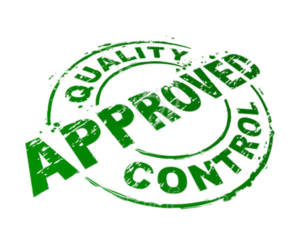Influencers Gone Rogue: How to Protect Your Brand

Published on March 9, 2018, at 6:54 p.m.
by Alyssa Comins.
In December 2017, YouTube star Logan Paul posted a video of a dead body in the Aokigahara forest near Mt. Fiji, Japan. The forest is known as a place where many choose to commit suicide. In the clip, Paul and his posse audibly try to hold back laughter. After swift backlash, Paul removed the video from his YouTube channel.
For Paul’s viewers, the video was inappropriate and disturbing. But for brands that work with Paul, the “suicide forest” clip was a public relations nightmare.
Paul is one of the biggest influencers in the United States. In 2017, he made $12.5 million, most of which came from brand partnerships. Some of the companies Paul has worked with include Disney, Pepsi, HBO, Hanes, Best Buy, Verizon and General Mills. As of January 2018, Paul earned nearly $150,000 per Facebook post and $80,000 per Instagram post.
While the use of influencers can be beneficial for many companies, there are some risks to consider. Paul is not the only example of an influencer who has gone rogue, and communication teams that attach their brands to a social media star must understand potential downfalls.
Why influencer marketing works
Before examining risks, it is important to understand why influencers have such power. Stacey Robinson earned her Ph.D. from Florida State University in 2011 and now teaches consumer behavior and marketing courses at The University of Alabama. Her research focuses on understanding consumer and frontline employee experiences in retail and service exchanges. Robinson said influencer marketing is successful because publics aim to mimic certain social media personalities.
“Influencer marketing works because there’s always an aspirational self,” Robinson said. “Consumers are always striving to either maintain status or improve their status. In influencer marketing, there’s a social influence component.”
A study by Twitter and Annalect noted 49 percent of people rely on influencer recommendations when making purchase decisions. Katie Duke, the vice president of client services at Acorn Influence in Fayetteville, Arkansas, said influencers are regarded as experts in their specific space. People rely on influncers’ advice to determine what products and services they should be utilizing in their own lives.
Why influencers can damage a brand
When an influencer does something that can jeopardize a brand’s image, the company usually responds by releasing a statement and cutting ties with the influencer. The harm to the brand is thought to be subtle and brief.
Robinson said there is little data on influencer behavior and its impact on brand partners because it is hard to attribute a single event to lasting damage.
“It’s difficult to directly tie that sort of behavior to something long-term, to a long-term negative consequence,” Robinson said. “And primarily, it’s because that damage is really done in the consumer’s mind. So, the damage occurs in terms of what the consumer associates the brand with. And it can be something that’s very emotion-based.”
Although it is difficult to connect unfavorable influencer behavior to a drop in sales or stock price, studies in psychology and consumer behavior suggest a person’s mental connection to the brand may change after an incident like Paul’s.
“In terms of association, negative behavior can absolutely create a negative association with brands that impacts how a consumer reacts to a brand, or if they choose to continue to have a relationship with the brand,” Robinson said.
According to Robinson, this negative association can cause publics to experience psychological discomfort. She noted that it is tough for people to verbalize or quantify how their feelings about the brand have shifted, but over time, those emotions can cause publics to end their relationship with the brand.
Robinson pointed to an interesting case study that demonstrates how adverse behavior can impact a brand, or even a whole industry.

“When the Tiger Woods scandal happened, the golf industry suffered major, major blows,” Robinson said. “Golf ball sales declined. People weren’t golfing as often. And there were a lot of critics who initially said, ‘No, it can’t be because of his behavior.’ But there was really nothing else to attribute it to.”
Mitigating influencer risk
The use of influencers can be hazardous, but there are steps communication practitioners can take to minimize risk. Duke said the best way to assuage risk is to ensure influencers and brands fit well together.
“It comes down to matching the brand well with the influencer,” Duke said. “These are real human beings. They aren’t robots. It really comes down to making sure you’re finding people who are good brand partners for you.”
Matt Kovacs, president of California-based Blaze PR, said companies who utilize public relations or influencer agencies are less likely to have problems with influencers.
“A lot of the agency’s role and job is to find the appropriate connectivity and look for those details. Do the due diligence to ensure [the influencer] is going to be the right fit. Ensure they don’t have a track record of going crazy, or doing wild posts or trying to shock everyone,” Kovacs said.
Duke agreed that utilizing an agency that specializes in screening potential influencers and their audiences is essential for lessening risk.
“Our process incorporates both science and art in vetting influencers to make sure they match with what the brand is looking for,” Duke said. “Along the same lines, we’re not just looking at the influencers; we’re looking at who their audience is. We want to make sure the influencer is communicating in the right tone of voice. We also want to make sure the audience is receiving the message correctly.”

There is another benefit of using an influencer agency: pre-approval. Duke said Acorn Influence approves an influencer’s messaging before anything gets posted.
“All of our influencers for our campaigns with brands have pre-approval,” Duke said. “So, we pre-approve all of their content to make sure that they are meeting every part of the contract before their content goes live. And then we look at it again once it goes up to ensure that it is what it should be.”
Kovacs said another way to lessen potential risk is to utilize specific types of influencers who are inherently less risky. He said micro-influencers, who typically have between 1,000 and 100,000 followers, are less likely to go rogue than their celebrity counterparts.
“It’s less risk and higher reward because you have people who are incentivized to work a little harder,” Kovacs said. “They’re trying to build their brands, and they want to have a good track record so they can try to increase their dollar amounts.”
Another way to minimize risk is by drafting a proper influencer agreement, a legal document that details what the brand requires and how the influencer will be compensated. Kovacs said this contract allows companies to withhold payments if the influencer is not representing the brand in an appropriate manner. He also noted the document protects all parties — companies, agencies and influencers — in case of a legal dispute or breach of contract.
While there are important steps public relations practitioners should take to protect brands from influencers gone rogue, there is only so much that can be done when dealing with human beings. Robinson said the human aspect of influencers may allow publics to better connect with the brand.
“Humans have a lot of flaws,” Robinson said. “We make a lot of mistakes, and we say a lot of dumb things. So, it’s difficult when you’re dealing with individuals for things to always go as planned. And in some ways, the fact that people are flawed benefits brands.”
While there are plenty of stories about influencers gone rogue, not every influencer will act like Logan Paul. It is the responsibility of PR professionals to find influencers who will represent the brand well, while showing the human flaws that allow them to form authentic connections with their audiences.




